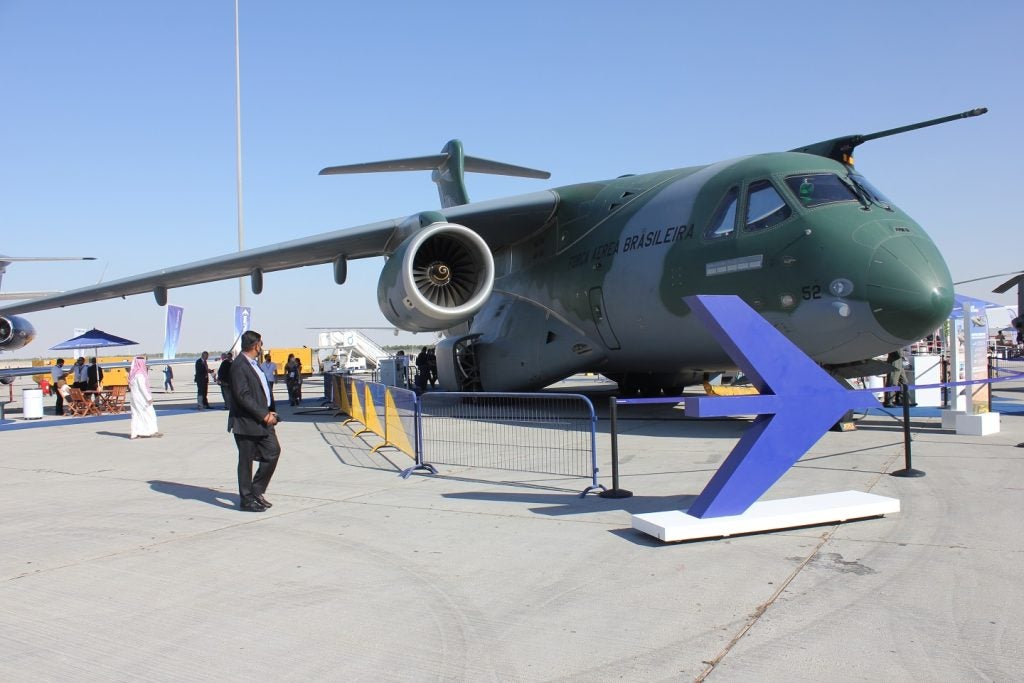
In his keynote speech opening the conference, recently appointed CEO Darren Roos articulated his vision for IFS, formulated since he joined the company in March. He said that to be successful IFS needed to be the best at three things: mid-market enterprise resource planning (ERP), field service management top to bottom, and aviation and defence. This was a bold statement for an organisation in direct competition with ERP giants SAP and Oracle.
But IFS has the military chops to aim high; it has been providing business solutions for the aerospace and defence industries for more than 20 years, and its A&D business came into being as a separate entity in 2000 as part of a joint venture with BAE Systems working on the F-35 Joint Strike Fighter programme. While tanks, aircraft, ships and weapons may grab the headlines, the Software that keeps military assets and their supply chains ticking is decidedly less glamorous but no less essential.
Targeting customers across the defence supply chain
IFS global industry director for aviation and defence Graham Grose explains that IFS aims to support these assets from production line to front line for three different types of defence customer.
“If you look at our go-to market, on one side you’ve got defence manufacturers, the alma mater of IFS, core manufacturing, with all the defence add-ons that you need,” says Grose. IFS supports that core function with IFS Applications 10 (Apps), the latest iteration of its enterprise software solutions, which was launched at the conference. It is designed to handle service and asset management, manufacturing, projects and supply chain management.
“Then there’s what we call the in-service side of defence,” continues Grose, “performance-based logistics, contracting for availability. Invariably this is working with the General Dynamics, Lockheed Martins, and BAEs of the defence world. The final part is armies, navies and air force. Typical flagships for us include the Norwegian Defence Forces – we’re running across all three armed services.”
Aircraft owners and operators are perhaps more familiar with Maintenix, the aviation-focussed maintenance management suite that IFS brought on board when it acquired Mxi Technologies in 2017. IFS aims to ultimately offer Maintenix as part of an integrated solution for defence manufacturers.
How well do you really know your competitors?
Access the most comprehensive Company Profiles on the market, powered by GlobalData. Save hours of research. Gain competitive edge.

Thank you!
Your download email will arrive shortly
Not ready to buy yet? Download a free sample
We are confident about the unique quality of our Company Profiles. However, we want you to make the most beneficial decision for your business, so we offer a free sample that you can download by submitting the below form
By GlobalData“Customers like Saab may want to bring Maintenix and IFS Apps together,” explains Grose. “There are 12,000 to 14,000 users of IFS Apps across five business of Saab. And they’re managing product lines – unmanned vehicles, Gripens, Black Hawks – with Maintenix.”
IFS associate vice president of products, aviation & defense, Dan Dutton, picks up on the theme of an integrated solution. “It’s a very exciting time for us in defence,” he says. “We want to offer an end-to-end best-of-breed capability to all of our different defence providers, but to make sure that we’re not doing that at a cost of the specificity of solution that’s needed in the sector.”
Bringing the defence industry into the cloud
Dutton says the company is seeing a lot of demand, particularly in the US defence sector, for being able to adopt cloud-hosted solutions through Amazon Web Services (AWS) GovCloud, which has Level 5 Department of Defense (DoD) approval, delivered over the Microsoft Azure platform. The AWS GovCloud (US) Region supports compliance with International Traffic in Arms Regulations (ITAR), the export control regulation that ensures defence related technology does not get into the wrong hands.
“We are in the process of launching a few of customers in GovCloud and building up the ITAR-compliant infrastructure support and obviously working with Microsoft to ensure that we have a good solution inside Azure GovCloud as well,” says Dutton.
Armed services customers bring the additional challenge of needing to operate when deployed, operating over a distributed network and often disconnected.
“When you look at deployments you need a solution where you can have several main operating bases with assets being able to move between them on a very flexible basis,” says Dutton.
“These range from large-scale deployments, like if you’re deploying a squadron to a carrier, to much smaller deployments where you have a couple of aircraft going out into a disconnected area. The first solution is to make it seamless and accessible by end users to take aircraft assets in and out of instances of the product and move them into other ones.
“The other element is a for-purpose application that allows us to hand it to the person that’s either going to send it out with the supply kit for the aircraft, maybe even with the aircraft itself. So instead of having an entire Maintenix instance that you bring with you, you have something on a tablet-based application or ruggedised laptop.”
Technology adoption still lags behind the private sector
However, the armed services present a challenge of lagging behind in adopting technologies that have rapidly infiltrated civilian life presents, as senior vice president of IFS Aviation and Defense Scott Helmer attests.
“We have to acknowledge is there is a significant aspect of digital transformation that is yet to occur,” he says. “You’ve been able to get your boarding pass on your smart phone for a decade, but many of the aviation and defence backend processes are still very manual and paper based, particularly in the area of maintenance operations.
“We are developing a reputation as the vendor who will enable customers to skip a generation of computer technology to support many of those processes and go straight to mobile applications. The emergence of Software as a Service based technologies is enabling us to deliver point solutions to solve very specific problems as well. There’s the challenge of security and encryption for defence customers, but their appetite to consume new capabilities that support their operations is more aggressive even than on the commercial side.”
Helmer admits that while IFS has a long, rich history in defence, it has historically underserved its defence applications, and the company intends to rectify that.
“We’ll invest more heavily in defence solutions and supporting defence customers, with a particular emphasis on North American defence customers,” he says. “Not to give short shrift to Canada, but North American means largely US.”
Helmer wraps up with a message to potential customers considering competitors’ ERP solutions.
“IFS can be the solution provider for all of their needs throughout their business,” he says. “Most people think of a very limited set of SAP and Oracle; in reality IFS has an extensive portfolio that supports all the core processes of their business and in a number of ways we’re more fit for purpose than any of the other guys.”





